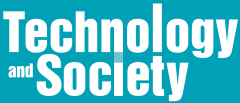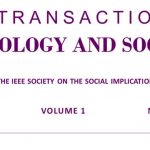Mann and Toles crystallize for us climate change denialism, principally in the United States, over the last generation. The core of this denial results from the confluence of several trends deeply embedded in the American culture.



Mann and Toles crystallize for us climate change denialism, principally in the United States, over the last generation. The core of this denial results from the confluence of several trends deeply embedded in the American culture.

Technology for Big Data, and its brother-in-arms Machine Learning, is at the root of, and is the facilitator of, deliberate string-pulling design choices. These design choices are made by people, and so the question actually becomes, do the design choices enabled by Big Data and Machine Learning have the capacity to alter, diminish and perhaps actually “destroy” what it means to be fundamentally human.

Our authors identified risks that can result in diminished humanity, if technology is designed or delivered irresponsibly. Our community addressed much of what it means to be human, in the context of complex and converging processes.

The IEEE Society for Social Implications of Technology (SSIT) invites you to participate in its flagship event, the 2019 IEEE International Symposium on Technology and Society. IEEE ISTAS 2019 takes place 15- 16 November in Boston MA, hosted by the School of Engineering of Tufts University, on its Medford Campus.

An anonymous donor has issued a challenge to match donations dollar for dollar up to US$10,000 by December 31, 2019.

Parents have no idea that lurking behind their kids’ screens and phones are a multitude of psychologists, neuroscientists, and social science experts, who use their knowledge of psychological vulnerabilities to devise products that capture kids’ attention for the sake of industry profit.

Holmes’s idea of inventing a cheap, small, fast, reliable blood-testing system to creatively destroy most of the world’s existing infrastructure for blood tests ran into big problems early on. But with her chutzpah, persuasiveness, and eventually with the help of outright obfuscations and lies, Holmes kept Theranos going until a Wall Street Journal investigative reporter named John Carreyrou responded to a lead by a health-care blogger that something fishy was going on.

The IEEE Society on the Social Implications of Technology (SSIT) are proud to announce the Society’s second refereed publication, the IEEE Transactions on Technology and Society (IEEE-TTS).

The IEEE SSIT Technology and Society (T&S) Magazine has been published for decades. The SSIT Board of Governors is very… Read More

“From today, painting is dead!” is said to have been proclaimed by the French painter Paul Delaroche in 1839 after seeing his first daguerreotype. His was an early name on the list of people who have made fools of themselves when prognosticating a future resulting from a new medium or invention. Motivated by either techno-euphoria or pessimism they have become famously wrong.

As populations increase, the volume of man and materials increases [1]. Demand can exceed capacity.

Does access to science communication inevitably lead to greater public understanding of science, its discoveries, and their impact? Does access to online data sets inevitably lead to full comprehension of available information by scientists?

SSIT’s new IEEE Transactions on Technology and Society will launch in March 2020. Information for Authors and General Call for Papers are here.

I am hopeful that our younger readership will learn a bit about less known American history from the brief analogy I utilized, and therefore will join us in honoring all such men as George Washington Carver and their marvelous contributions to society! Thank you to Mr. Gadeken for his comments.

Why would anyone own, or even need to own, a driverless car, if they do not get to drive it? Which in turn begs the question, if the central tenet of the personal car ownership model (i.e., ownership) no longer holds, then what is the replacement business model?

On that day, at 2:26 p.m., Eastern time, from Cape Kennedy, Lunar Orbiter 1, the first spacecraft to orbit the Moon, was launched. Four days later, at 8:43 a.m., Eastern time, the spaceship successfully entered an orbit around the Moon, becoming the first human-made object to orbit a heavenly body other than Earth.

It is essential not only to estimate the sales potential of driverless cars, but also to debate how they will affect the society and cities’ livability.

Meeting traveler’s expectations, and properly exploiting available transport resources, is becoming a more and more complex task.
The role of driverless cars in future transport systems remains debatable, in terms of their potential to replace other transport modes or have a novel, unique, and complementary functionality.

In the age of driverless cars, rail — as a means of transportation that takes many people from one central station to another central station — has lost justification for its existence.